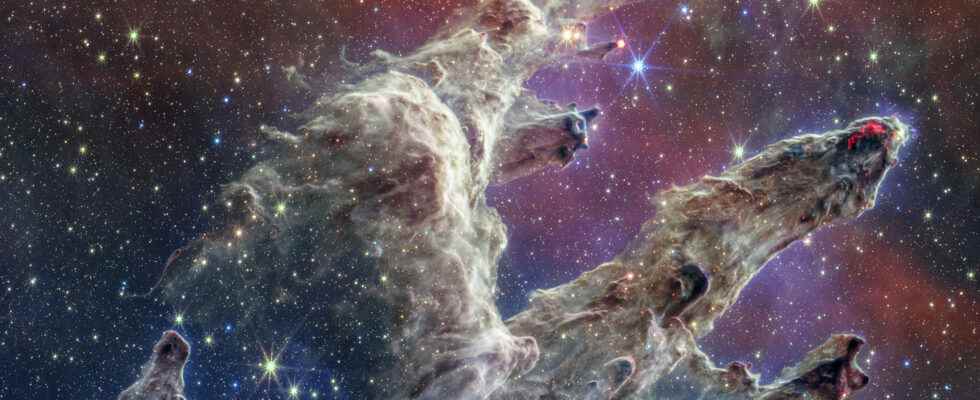The Pillars of Creation have just been revisited by the James Webb Space Telescope. Once again, the photograph proposed is grandiose and reveals fascinating details about this nursery of stars.
It is certainly one of the most famous photographs of space, with “A pale blue point”. The “Pillars of Creation”, the nickname given to the immense clumps of interstellar dust captured in 1995 by the Hubble telescope, have just been revealed in an unpublished snapshot, shared on November 30, 2022 by the American Space Agency.
As pointed it out astrophysicist Éric Lagadec, NASA has posted a new photograph of these spectacular columns in which stars are born. This shot, which can be viewed in ultra high definition at this address (the photo weighs more than 57 MB), was taken by NASA’s new space telescope: James Webb, operational since the summer of 2022.
This new ultramodern observatory had already aroused everyone’s admiration by photographing these Pillars of Creation for the first time. On this occasion, we were able to see the incredible difference in precision, finesse and detail between Hubble and James Webb. Nothing surprising, however: more than three decades separate these two telescopes.
At the time, however, James Webb staged these structures using NIRCam, his camera specializing in near infrared — a wavelength invisible to the naked eye. Results ? In the photo, the dust is orange on a midnight blue background. No wonder it has become a wallpaper, like the other sumptuous photos of James Webb.
James Webb uses his specialized mid-infrared camera
This time, it is a composition mixing NIRCam and MIRI which is proposed. The role of this second camera is to target the mid-infrared — that’s why it’s called (Mid-Infrared Instrument), like NIRCam (Near-InfraRed Camera). This is hardly surprising, since James Webb was designed to be excellent in infrared.
The rendering here is very different: the columns now appear grey, as if they were dusty, on a blue background slightly degraded between blue and orange. It is in these spirals, which extend over light years, that the stars appear. These structures, also called nebulae, are veritable stellar nurseries.
” When clumps of gas and dust of sufficient mass form in the pillars, they begin to collapse under their own gravitational pull, slowly heat up, and eventually form new stars “recalls NASA in the descriptive page of the snapshot. This is also why we speak of pillars of creation.
Unfortunately, we will not have the opportunity to see fully formed stars. This process literally takes millions of years – in this picture, these stars, some of which are still only protostars, are only a few hundred thousand years old. The human species will no doubt have largely disappeared when they complete their development.
